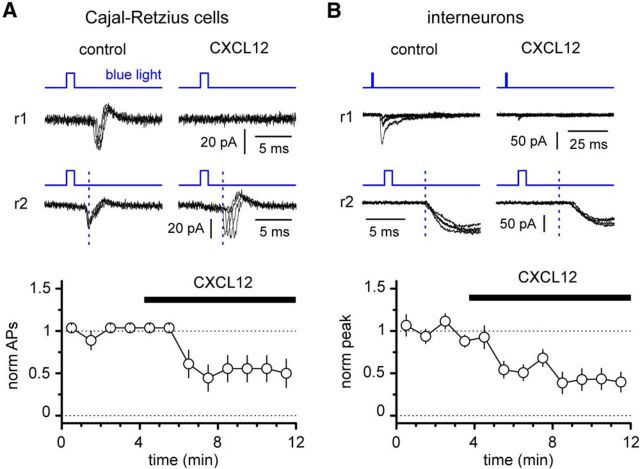Figure 5.
Activation of the CXCR4 receptor has parallel effects on optogenetically triggered excitability of Cajal-Retzius cells and optogenetically evoked postsynaptic responses in stratum lacunosum-moleculare interneurons. A, Bath application of CXCL12 (50 nm) either reduces the number of light-triggered action potentials (r1, example recording 1) or delays (r2, example recording 2) firing of Cajal-Retzius cells. Top, Insets, The distinct effects are shown by four overlapped sweeps in control and in the presence of CXCL12. The vertical dashed blue lines are for temporal reference. Notice that in the presence of CXCL12 (black bar) the latency of the firing increases in r2. Bottom, Summary graph (empty circles, mean; bars, SE) of the time course of the effect of CXCL12 application on light-evoked spikes in Cajal-Retzius cells (norm APs, normalized number of action potentials). B, Similar to A, but the analysis is performed on synaptic responses recorded from stratum lacunosum-moleculare interneurons. Notice in the top panels either the abolishment of the synaptic response (r1, example recording 1) or the delay of its onset (r2, example recording 2). The vertical dashed blue lines are for temporal reference. Bottom, Summary plot of the time course of the normalized peak amplitude (norm peak) of the postsynaptic response during CXCL12 application (black bar).

